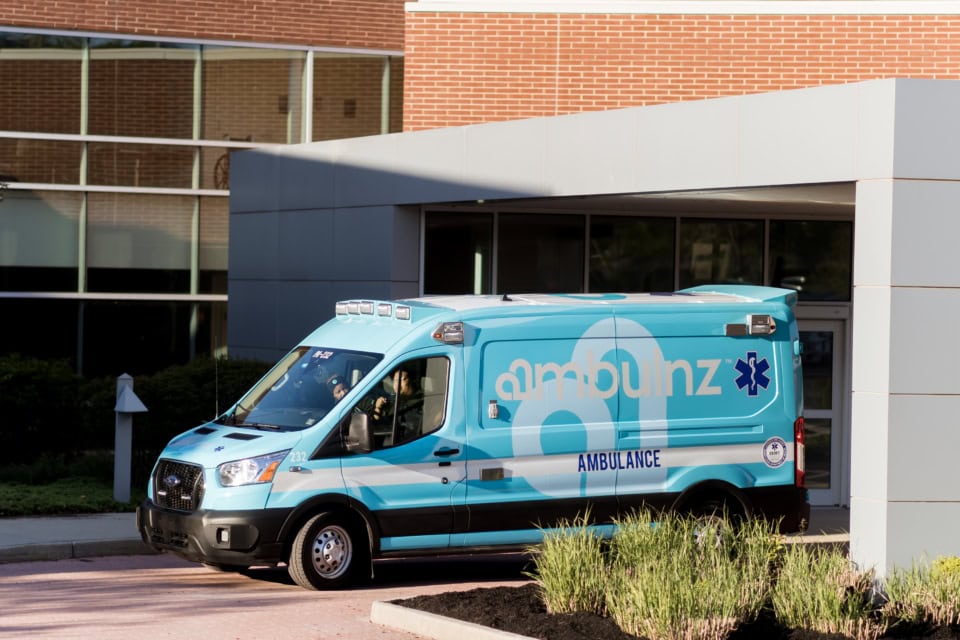In healthcare, getting to the hospital with the right level of care at the right time can mean the difference between life and death. Yet, many healthcare facilities face challenges with traditional shared ambulance services. Traditional medical transport operates predominantly on a fee-for-service basis, where ambulances are dispatched from a shared pool used by multiple health systems and facilities in the market.
Medicare and Medicaid transports are reimbursed at rates below the cost of service, and a significant number of these services cater to uninsured or underinsured patients. This results in a funding model that is both inconsistent and inadequate, forcing traditional ambulance services to maintain lean operations insufficient to meet the demands of both hospitals and patients. This model, while widespread, is under increasing strain. Ambulances are often spread too thinly across facilities, resulting in delays in critical responses, draining hospital resources when patients can’t be discharged timely or make appointments, and affecting patient satisfaction scores. Yet there is a solution–Ambulnz by DocGo’s leased unit hour model. Let’s understand why.
Where the Current System Breaks Downs
Consider a typical scenario at 3 p.m. on a Friday, statistically one of the busiest times of the week. Healthcare facilities are managing final appointments, discharging patients before the weekend, and responding to emergencies. Without dedicated transport, different health systems are forced to compete for ambulance services when demand for emergency medical services is highest. If there aren’t enough to go around and they draw the short straw, their patients’ journeys may be delayed or they may not go home at all – forcing another costly overnight hospital stay and tying up beds needed for other patients. The ripple effect of these delays can be profound, resulting in extended length of hospital stays, escalating healthcare costs, and diminished patient satisfaction.
Introducing the Leased Unit Hour
The leased unit hour model is an effective answer. Through the leased unit hour model, Ambulnz by DocGo ensures that specific ambulances are exclusively dedicated to a particular health system. But how does it work?
Well, the concept of the ‘leased unit hour’ is not new. From aircraft leasing to construction equipment and even your rental car, leasing a resource by the hour is widely used concept. When applied to medical transport, however, the concept becomes transformational to service delivery.

Improved Service and Guaranteed Coverage
With the leased unit hour model, Ambulnz by DocGo offers health systems a dedicated fleet of ambulances and other medical transport vehicles to ensure guaranteed coverage. The health system’s staff control scheduling and transport prioritization, as Ambulnz by DocGo’s crews run as many trips as required. As dedicated personnel with on-site vehicles, EMTs and paramedics learn the protocols and facility layouts of their assigned health system. And when a surge occurs, the health system’s ambulance transport partner dispatches additional resources from their surrounding non-dedicated flex fleet to handle any overflow.
Faster response times mean better overall patient flow to and from medical facilities, more efficient emergency care, and reduced congestion in critical areas such as emergency rooms and hospital beds. All of this is managed using proprietary transport management software with real-time visibility and visual tracking of every transport, which can also incorporate other subcontract ambulance network providers to provide a comprehensive, centralized view of reporting and network management.
Increased Savings
Financially, the leased unit hour model can be transformative. Efficient patient flow allows for faster bed turnover rates, which directly impacts a hospital’s ability to admit and treat new patients – representing a real impact to both hospital potential revenue through increased services and a reduction in cost through shorter lengths of stay. Ambulnz by DocGo bills the patients’ insurance provider for trips, and any insurance reimbursements received by Ambulnz by DocGo are used to offset the monthly leased unit hour fees for health systems. As unit utilization goes up where an ambulance is serving more patients per hour, the cost-per-trip goes down. The leased unit hour incentivizes all partners to work together to optimize efficiency.
Economies of Scope, Skill, and Scale
Ambulnz by DocGo’s application of the leased unit hour model for medical transport is setting new standards for industry efficiency by helping rectify the inefficiencies of traditional fee-for-service models. This approach provides a blueprint for how timely, reliable medical transportation can help enhance operational efficiency, improve patient satisfaction, and stabilize financial operations within health systems.
Health systems invest in building a stellar reputation within the community and the healthcare industry. Dedicated leased hour vehicles allow them to extend that brand recognition, loyalty, and trust even further. Ultimately, for complex projects involving multi-facility health systems that can benefit from trained, dedicated personnel, leased-unit-hour systems provide economies of scope, skill, and scale.








